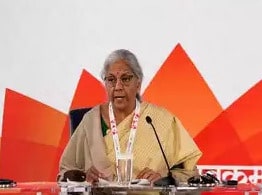
The Central Board of Indirect Taxes and Customs (CBIC) is reportedly considering the introduction of an automated system for publishing daily exchange rates for 22 currencies. The move is aimed at enhancing transparency and efficiency in the management of foreign exchange transactions.
Currently, the exchange rates for foreign currencies are manually uploaded on the CBIC’s website on a daily basis, which can be a time-consuming and error-prone process. The proposed automated system would streamline the process by automatically updating the exchange rates based on data from authorized sources.
“The proposed system will enable us to publish exchange rates for 22 currencies in a timely and accurate manner, thereby reducing the potential for errors and delays in foreign exchange transactions,” said a senior CBIC official.
The official added that the proposed system would also enhance transparency and reduce the scope for malpractices in the foreign exchange market.
The CBIC’s move comes as the government steps up efforts to strengthen the country’s foreign exchange management framework. India’s foreign exchange reserves currently stand at a record high of over $600 billion, reflecting the country’s strong external position.
The proposed automated system is expected to benefit a range of stakeholders, including importers, exporters, and travelers, who rely on accurate and up-to-date exchange rates for their transactions.
Industry experts have welcomed the move, noting that an automated system for exchange rates would reduce the administrative burden on businesses and promote greater efficiency in the foreign exchange market.
“The introduction of an automated system for exchange rates would be a significant step towards enhancing transparency and reducing the potential for errors and delays in foreign exchange transactions. It would also promote greater efficiency and competitiveness in the market,” said Rajiv Kumar, Vice Chairman of NITI Aayog, a leading think tank.
Kumar added that the proposed system would also help to build trust and confidence among foreign investors, who are increasingly looking to India as an attractive destination for investment.
The CBIC’s move is part of a broader effort to modernize India’s foreign exchange management framework. The government has recently introduced a range of measures aimed at liberalizing foreign exchange regulations and promoting greater ease of doing business.
These measures include the simplification of foreign exchange regulations, the introduction of a new system for cross-border payments, and the liberalization of rules for foreign investment in key sectors such as defense, insurance, and e-commerce.
The government has also launched a series of initiatives aimed at promoting digital payments and reducing the reliance on cash in the economy. These initiatives include the introduction of a new mobile payments platform, the expansion of digital payment infrastructure, and the promotion of cashless transactions in government services.
The CBIC’s proposed automated system for exchange rates is expected to complement these initiatives, by promoting greater transparency and efficiency in foreign exchange transactions, and facilitating the adoption of digital payments.
The proposed system is also expected to benefit small and medium-sized enterprises (SMEs), which often face challenges in accessing foreign exchange markets due to their limited resources and lack of expertise.
“The proposed system would be particularly beneficial for SMEs, as it would reduce the administrative burden and costs associated with foreign exchange transactions. It would also provide them with access to more accurate and up-to-date exchange rates, enabling them to make more informed business decisions,” said Pradeep Mehta, Secretary-General of CUTS International.
The proposed automated system is still in the planning stages, and it is not yet clear when it will be introduced. However, the CBIC has indicated that it is committed to strengthening India’s foreign exchange management framework, and is exploring a range of measures to promote greater efficiency and transparency in the market.









